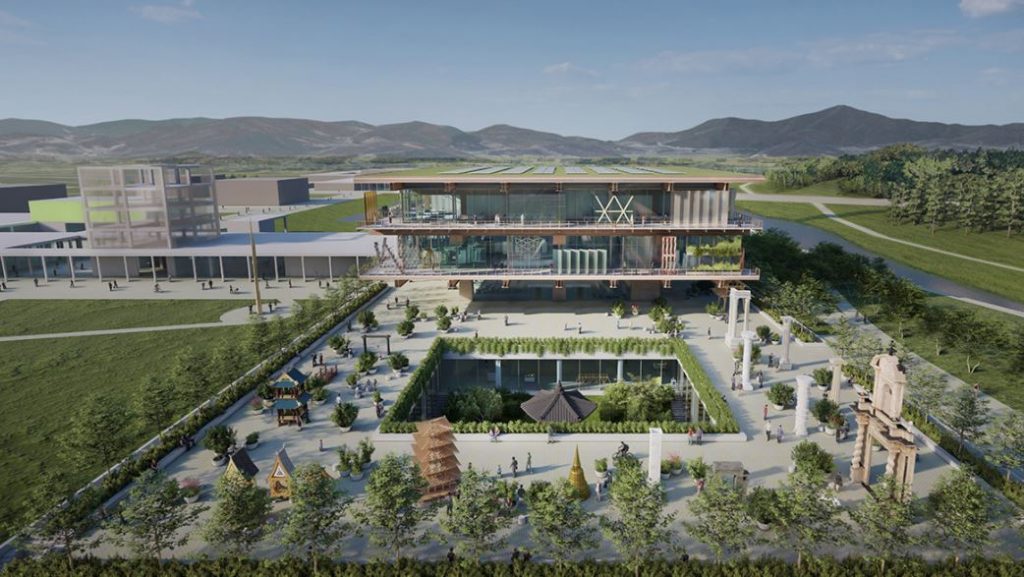
by Ron Bernthal
In November, 2020, South Korea announced that a new museum will be constructed that’s dedicated to architecture and the urban environment.
The proposed Korean Museum of Urbanism and Architecture (KMUA) will be part of the new National Museum Complex, which is currently under development in Sejong City, about two hours south of Seoul. 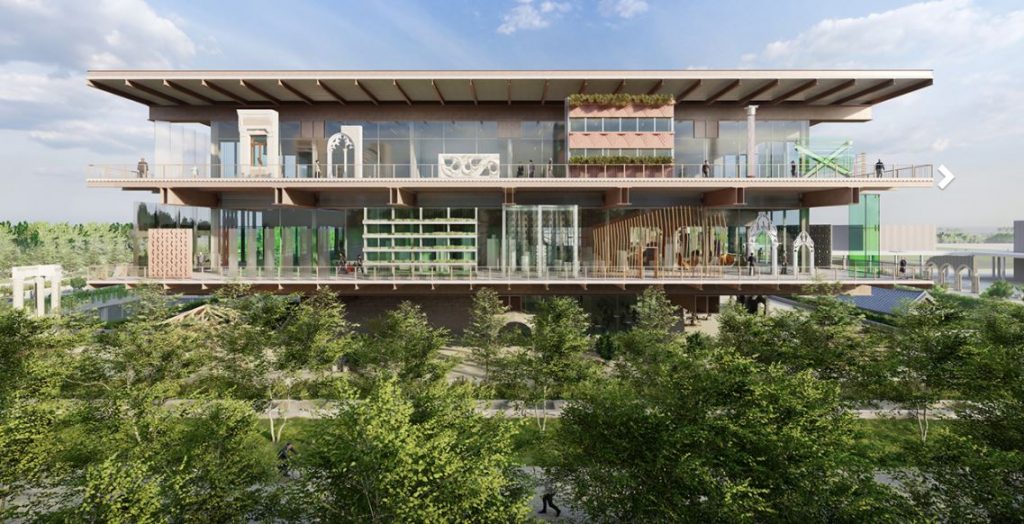
The South Korean design firm AZPML and Yukyung Kim of UKST recently won the international competition to design the $42 million museum. The winning design takes inspiration from South Korea’s traditional hanok roofs but the proposal goes deeper as it aims to create a cultural experience that explores urbanization and architecture’s role in the climate crisis.
Because cities account for nearly 70 per cent of carbon emissions and about 66 per cent of energy consumption worldwide, it was only fitting that the winning design exemplifies good ecological and environmental performance. Of course, the building will be surrounded by plenty of greenery as well.
The architects proposal is to use the construction of the KMUA both to exemplify the best practices in the industry in terms of ecological and environmental performance while paying tribute to an age which saw a failed Korean economy transformed into one of the most thriving economies in the world through a process of radical transformation of many Korean cities. Their idea is to use many of the girders that will result from the demolition of older elevated roads to build the KMUA as an oversized scaffolding to hold real fragments of architecture.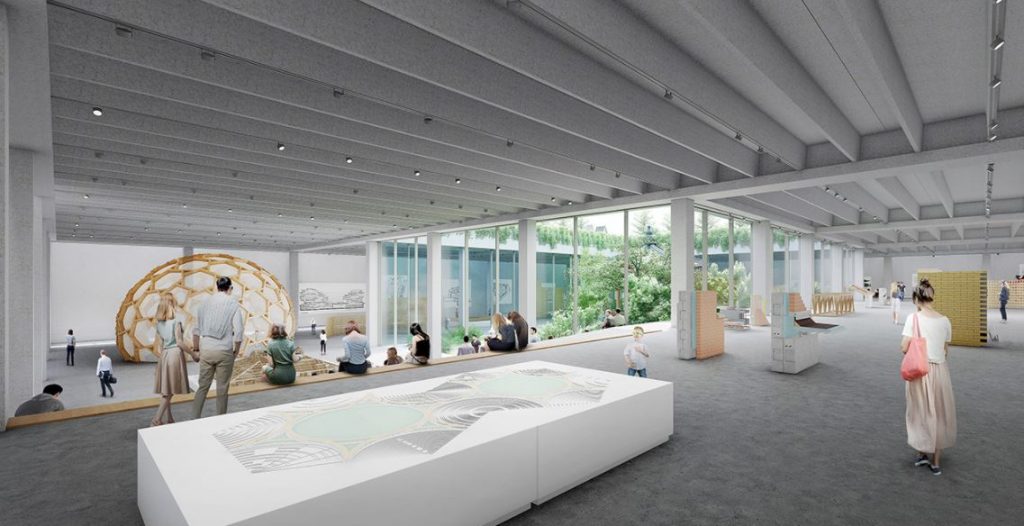
The designers want to make the KMUA into a model of the best practices in the construction industry by highlighting mining, the preservation of resources, and the reduction of embodied energy, carbon emissions, construction waste and pollution.
The KMUA will be assembling these large infrastructural sections by simple piling, producing stepped cantilevers similar to hose that can be found in the eaves of traditional Hanok roofs. Hanok is a traditional Korean house, first designed and built in the 14th century during the Joseon Dynasty. This traditional Korean architecture considers the positioning of the house in relation to its surroundings, with thought given to the land and seasons. This type of construction refers to metabolist architecture as practiced by Kim Soo-Geum in some of his 1970s buildings, mixing also with some obvious Miesian characteristics, from the German-born architect and designer Ludwig Mies van der Rohe.
When the KMUA is completed, it will serve as a monument to the infrastructure construction that became a symbol of the Korean modern development phase in the 1960s and 1970s. An architectural museum is not an art museum. One of the problems of exhibiting architecture is that it has to be fitted to spaces that are designed for another medium. So, the problem that confront architectural curators is the almost impossible task of offering to the public a close approximation to the real experience of the object. The museum will be structured like a massive scaffolding to hold full-scale sections of architectures, itself built from infrastructural elements, and should offer a collection full-scale pieces of architecture, and, thus, will need to remain always an on-going project. 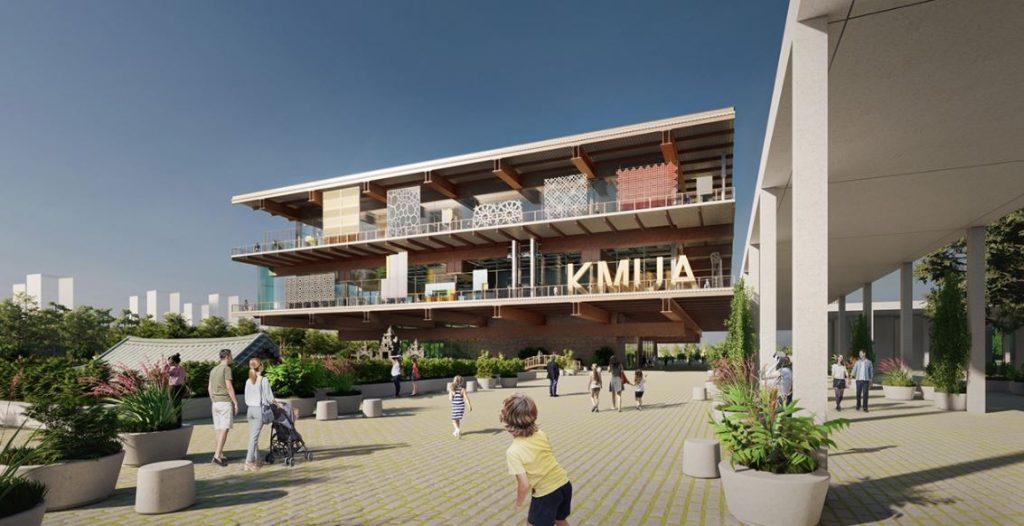
The building will contain two sunken courtyards that will o provide daylight and ventilation to the public programs. Centred between them, an atrium will connect to the ground floor lobby and the accessible storage area sitting above. The Museum canopy will be an independent location on edge of the public square. The archives will sit in the middle of a walled “treasure garden” where architectural fragments will be displayed between a grove of trees and vegetation.
The building provides a 36-foot cantilever over the public space to protect people from rain and sun and provide a monumental access to the galleries placed below. The lobby includes reception space for the Museum, a café/restaurant facility, and the Museum bookshop, all arranged around a central space linking visually to the temporary galleries in the basement level. Two vertical circulation cores are proposed to be covered with stones from historical Korean fortresses.
The peripheral windows will looking into the exterior gallery will be built with windows covered by an electrochromic layer capable of producing a range of transparency between 60 per cent and 1 percent light transmittance, to allow for the exposure of the collections to daylight, if desired. 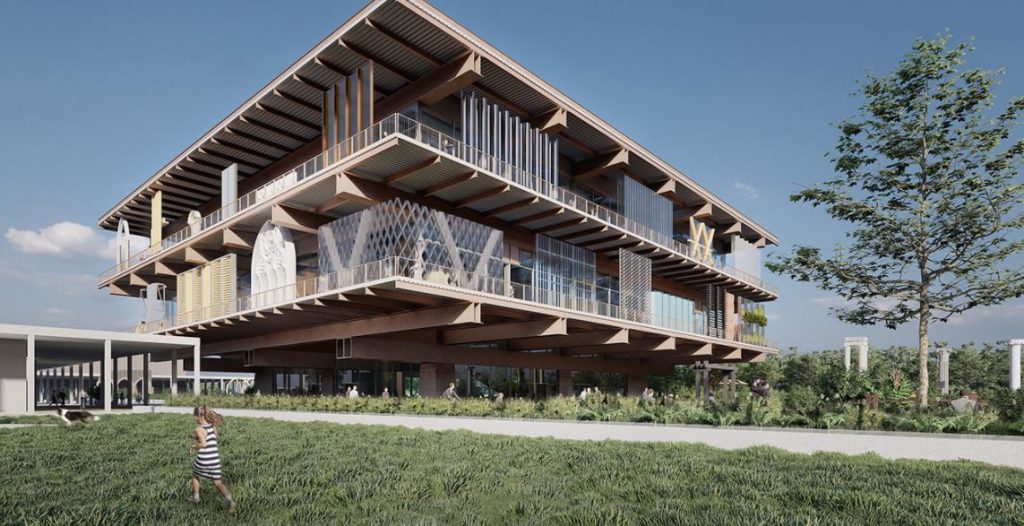
The museum’s terrace will become a “promenade architecturale” where visitors will be able to view the surrounding landscape of Che Creek, the Ge-um river, the Dong-nak-je-ong historical park, and the larger Korean Museum Complex itself.
The building’s environmental conditioning systems have been designed to reduce carbon emissions and entirely rely on solar and geothermal energy. This will occur mostly through radiation and natural ventilation. A decentralized system will also offer a much safer performance in respect to the management of volatile organic components, such as covid-19. Only the Exhibition and Storage areas will have an air-based Variable Air Volume climatization all year around to maintain strict standards of thermal and hygrometric conditions for the collection. All other functions have been designed to operate with a natural ventilation system combined with radiant floors to meet heating and cooling requirements. 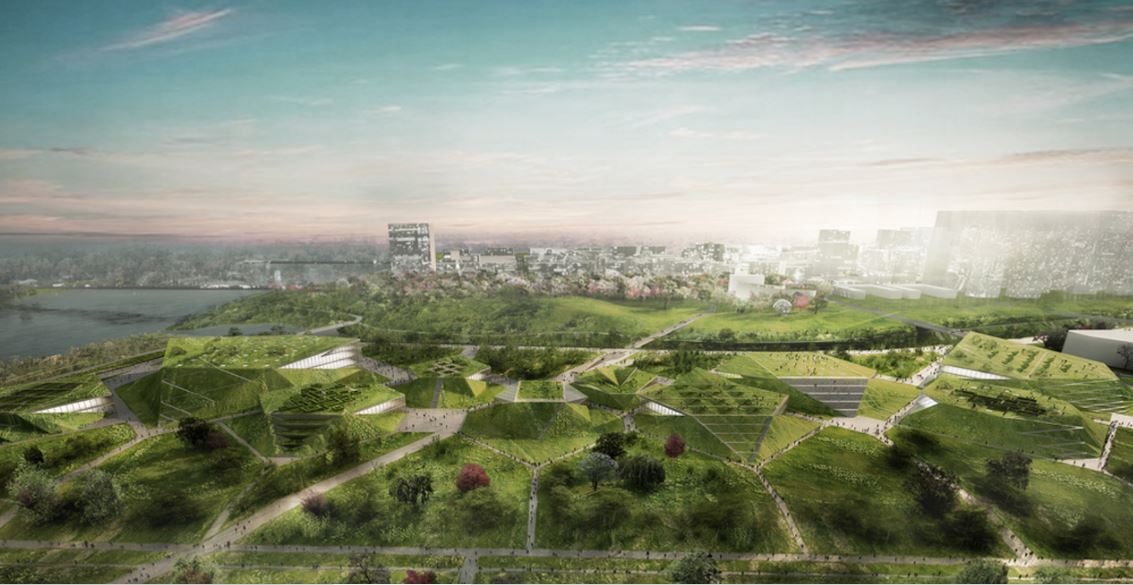
(National Museum Complex)
Korean tourist officials have no doubt that the National Museum Complex Masterplan in Sejong City will have the critical mass to become not only a source of national pride and interest, but that it will draw visitors from all over the world.
The specific location of the National Museum Complex should attract not only visitors interested in architecture, but a general audience as well, as the future facility is surrounded by water on two sides, and embedded inside the future Central Park of Sejong City. Due to the absence of a neighboring urban fabric, the future Complex will have to be designed as an integral part of the park itself. The Complex has been structured so that it can be built with the maximum flexibility, making every museum an independent piece that can be built separately, rather than being bound to build the whole complex for it to work. The proposal is that the Complex can be an on-going venue, regardless of how many of the Museums are eventually completed, and it will work as a sophisticated park environment.

